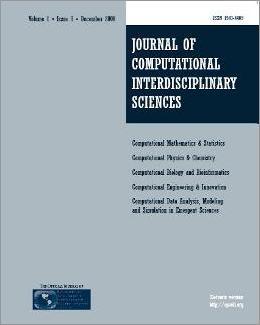
Editorial Office:
Management:
R. S. Oyarzabal
Technical Support:
D. H. Diaz
M. A. Gomez
W. Abrahão
G. Oliveira
Publisher by Knobook Pub


Editorial Office:
Management:
R. S. Oyarzabal
Technical Support:
D. H. Diaz
M. A. Gomez
W. Abrahão
G. Oliveira
Publisher by Knobook Pub
doi: 10.6062/jcis.2015.06.02.0097
(Free PDF)Marcelo Módolo, Lamartine N. F. Guimarães and Reinaldo R. Rosa
The supernovae (SN) classification is an important scientific issue in astrophysics and cosmology. Usually, it is done by analyzing the spectra observed near the peak of the correspondent light curve. Because this task is difficult and usually made by an expert astronomer, it is important the study of computational techniques that allow the automatic classification of these spectra. In this paper we perform SN automatic classification method based on computational intelligence that simulates the human analytical expertise, making it a more formal classification and less prone to subjectivity of human analysis. Our classifier was developed using Multilayer Perceptron Neural Network to identify the usual SN types: Ia, Ib, Ic and II. The classifier was trained and tested on a database with 331 spectra of 56 different SN. The results are promising and indicate viability of this methodology for automatic SN classification in larger data sets.
Supernovae automatic classification, spectrum analysis, artificial neural network, computational data analysis.
[1] Giunti, C. and Kim, C. W. Fundamentals of Neutrino Physics and Astrophysics, Nova York: Oxford University Press, 2007.
[2] Turatto M., Benetti S. e Pastorello A. Supernova classes and subclasses, American Institute of Physics Conference Series, vol. 937, pp. 187-197, 06 2007.
[3] Turatto M. "Classification of Supernovae", Supernovae and Gamma-Ray Bursters, vol. 598 de Lecture Notes in Physics, pp. 21-36, 01 2003.
[4] Modjaz M., Blondin S., Kirshner R. P., Matheson T., Berlind P., Bianco F. B., Calkins M. L., Challis P., Garnavich P., Hicken M., Jha S., Liu Y. Q. and Marion G. H. "Optical Spectra of 73 Stripped-envelope Core-collapse Supernovae", The Astronomical Journal, vol. 147, pp. 99-115, 05 2014.
[5] Harutyunyan A. "Automatic Objective Classification of Supernovae", Padova, 2008.
[6] Blondin S. and Tonry J. L. "Determining the Type, Redshift, and Age of a Supernova Spectrum", The Astrophysical Journal, vol. 666, pp. 1024-1047, 09 2007.